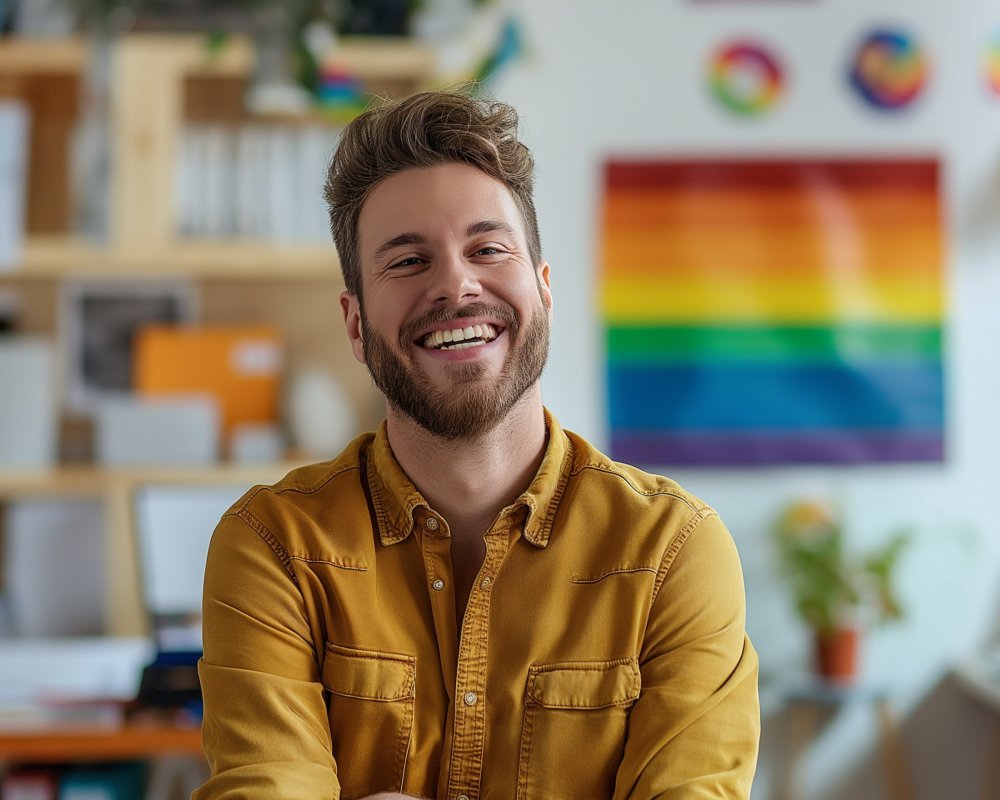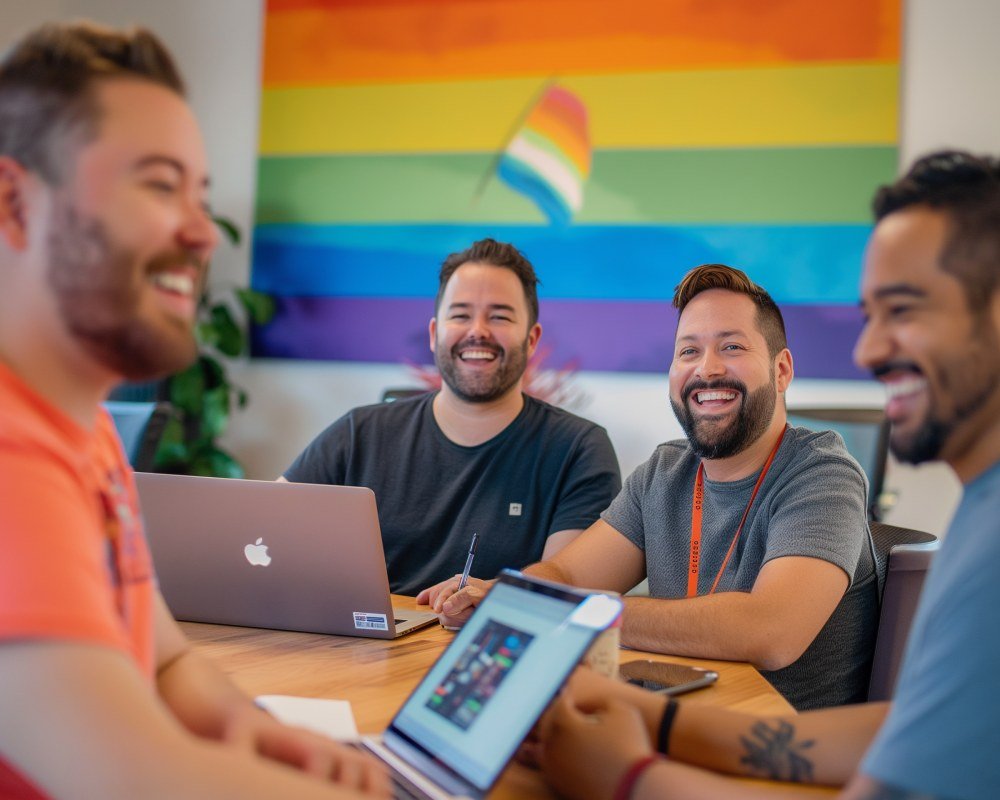
We Need LGBTQ+ Urbanism: Redefining Cities for Inclusivity
Cities are the lifeblood of modern society, offering opportunities for connection, expression, and growth. For LGBTQ+ communities, urban areas have historically served as sanctuaries for self-expression and solidarity. However, traditional urban planning often neglects the unique needs and contributions of queer individuals. Enter LGBTQ+ Urbanism: a transformative approach to city design that prioritizes inclusivity, diversity, and representation. In this blog, we delve into why we need LGBTQ+ urbanism, exploring its intersections with walkability, queer identity, and inclusive city-building.
What Is LGBTQ+ Urbanism?
LGBTQ+ Urbanism, also known as Queer Urbanism, reimagines cities as spaces that actively embrace and celebrate LGBTQ+ identities. It goes beyond mere tolerance, embedding principles of equity and inclusion into the fabric of urban design.
Key Concepts in Queer Urbanism
- Representation: LGBTQ+ voices in urban planning ensure diverse needs are met.
- Walkability and Accessibility: Creating spaces where queer communities can thrive without barriers.
- Safe Spaces: Designing neighborhoods and public areas that prioritize safety and inclusivity.
- Cultural Hubs: Celebrating queer history and culture through dedicated landmarks and events.

Where Queer Meets Walkability and Urbanism
Walkable cities are inherently more inclusive. For LGBTQ+ individuals, walkable urban areas foster:
- Community Building:
- Sidewalk cafes, parks, and plazas become gathering spaces for connection and activism.
- Example: The Castro District in San Francisco, where walkability supports a vibrant queer community.
- Economic Opportunities:
- Walkable cities attract queer-owned businesses, enhancing visibility and economic vitality.
- Example: Boystown in Chicago is a hub for LGBTQ+-friendly commerce.
- Accessibility to Resources:
- Close proximity to LGBTQ+ centers, healthcare providers, and cultural hubs ensures community members have access to essential services.
Advertisement · Scroll to continue
Recommended
Why We Need Queer Urbanism
1. Safe Spaces for Marginalized Identities
For many LGBTQ+ individuals, urban areas represent refuge and opportunity. Queer Urbanism emphasizes the creation of safe spaces where individuals can express their identities freely.
- Trans Urbanism: Addresses the unique needs of transgender individuals by advocating for gender-neutral bathrooms, accessible healthcare, and housing options.
- Lesbian Urbanism: Prioritizes safe gathering spaces for lesbian communities, addressing intersectional challenges like gender inequality.
- Gay Urbanism: Envisions neighborhoods that celebrate gay culture while fostering inclusivity.
2. Resisting Displacement Through Affordable Housing
Gentrification often displaces queer communities from their historic neighborhoods. Queer Urbanism advocates for:
- Affordable Housing: Ensuring access to mixed-income developments that prevent displacement.
- Preservation of Gayborhoods: Protecting iconic neighborhoods like Chelsea in New York and West Hollywood in Los Angeles.
3. Celebrating LGBTQ+ Culture
Cities thrive on culture, and queer culture adds vibrancy to urban life. LGBTQ+ Urbanism integrates:
- Landmarks: Establishing monuments and memorials that honor LGBTQ+ history.
- Festivals: Supporting events like Pride parades and queer film festivals.
- Art and Performance Spaces: Creating venues that celebrate LGBTQ+ artists and performers.

Challenges in Implementing LGBTQ+ Urbanism
Despite its promise, LGBTQ+ Urbanism faces hurdles, including:
1. Lack of Representation
Urban planning often excludes LGBTQ+ voices, resulting in spaces that fail to address community needs. Advocacy for representation in city councils, planning boards, and design firms is crucial.
2. Gentrification
While urban revitalization can enhance city living, it often prices out marginalized communities. Policies protecting affordable housing and queer-owned businesses are essential.
3. Safety Concerns
Hate crimes and discrimination remain persistent issues in urban areas. Queer Urbanism must address public safety through education, community policing, and inclusive design.
Examples of LGBTQ+ Urbanism in Action
1. The Castro District, San Francisco
- What It Offers: A historic gayborhood with LGBTQ+ landmarks, walkable streets, and vibrant nightlife.
- Why It Works: Community-driven planning and preservation of queer culture.
2. Boystown, Chicago
- What It Offers: Rainbow pylons, inclusive businesses, and a hub for queer pride.
- Why It Works: Strong community leadership and investment in LGBTQ+ visibility.
3. West Hollywood, Los Angeles
- What It Offers: An LGBTQ+ cultural epicenter with iconic venues like The Abbey.
- Why It Works: Policies supporting LGBTQ+-friendly businesses and affordable housing.

Advertisement · Scroll to continue
Recommended
The Role of LGBTQ+ Urbanism in Climate Resilience
Cities are on the frontlines of climate change, and LGBTQ+ Urbanism plays a role in creating sustainable solutions:
- Green Spaces:
- Parks and community gardens provide safe, inclusive areas while promoting environmental health.
- Public Transportation:
- Walkable, transit-friendly cities reduce reliance on cars, benefiting both the environment and accessibility.
- Resilient Communities:
- Strong queer networks enhance disaster preparedness and community response.
How to Advocate for LGBTQ+ Urbanism
1. Support Queer Voices in Planning
Encourage LGBTQ+ representation in urban planning by:
- Promoting diverse hiring practices in architecture and city design firms.
- Advocating for queer leaders in local government.
2. Partner with LGBTQ+ Organizations
Collaborate with groups like:
- The Trevor Project: For inclusive mental health resources.
- OutRight Action International: For global LGBTQ+ advocacy.
3. Invest in Inclusive Policies
Push for policies that:
- Protect affordable housing in queer neighborhoods.
- Provide grants for LGBTQ+-owned businesses.
- Ensure public spaces are safe and accessible for all.

Table: Comparing LGBTQ+ Urbanism with Traditional Urban Planning
| Aspect | LGBTQ+ Urbanism | Traditional Urban Planning |
|---|---|---|
| Focus on Inclusivity | Centers LGBTQ+ voices and experiences. | Often overlooks marginalized communities. |
| Cultural Representation | Highlights queer history and landmarks. | Focuses on mainstream narratives. |
| Affordable Housing | Advocates for mixed-income developments. | Prone to gentrification without safeguards. |
| Public Safety | Prioritizes safe spaces for queer individuals. | Generic approaches to safety concerns. |
The Future of LGBTQ+ Urbanism
The future of urban design must embrace diversity and inclusivity. LGBTQ+ Urbanism offers a blueprint for cities that celebrate individuality while fostering community. By prioritizing queer voices and addressing systemic challenges, we can create cities that are not just places to live, but spaces where everyone can thrive.
Conclusion – We Need LGBTQ+ Urbanism
We need LGBTQ+ Urbanism now more than ever. As cities grow and evolve, embracing queer perspectives in urban planning ensures inclusivity, resilience, and vibrancy. Whether through walkable neighborhoods, cultural landmarks, or safe public spaces, LGBTQ+ Urbanism redefines what it means to build cities for everyone. Together, we can create urban environments that celebrate diversity and empower all communities to flourish.
Advertisement · Scroll to continue

More Recommended
How Gay-Friendly Businesses are Shaping the Future of Marketing
Breaking Barriers: How Gay-Friendly Businesses are Shaping the Future of Marketing – of headings and [...]
What Are the Best Gay Movies to Watch?
What Are the Best Gay Movies to Watch? – Sure! Here’s your blog post with [...]
The Impact of Gay Marriage on Society
The Impact of Gay Marriage on Society – Gay marriage has been a hotly debated [...]
Best Gay Beaches in Latin America: Your Ultimate Guide
Best Gay Beaches in Latin America: Your Ultimate Guide 1. Introduction: Why Latin America is [...]
Visibility Matters: The Impact of Lesbian-Owned Brands in Marketing
Visibility Matters: The Impact of Lesbian-Owned Brands in Marketing In today’s ever-evolving digital landscape, visibility [...]
200 You Know How I Know You’re Gay Jokes
Laughter is a fabulous way to connect, and when it comes to LGBTQ+ humor, nothing [...]
Gay Bars in Ormond Beach, Florida
Gay Bars in Ormond Beach, Florida – A Detailed Look at the Local Scene Nestled [...]
Building Brand Loyalty: The Power of Diversity and Inclusion in Gay-Owned Businesses
Building Brand Loyalty: The Power of Diversity and Inclusion in Gay-Owned Businesses – “Building Brand [...]
Breaking Barriers: How Lesbian-Owned Businesses are Thriving in the Market
Breaking Barriers: How Lesbian-Owned Businesses are Thriving in the Market As we continue to progress [...]